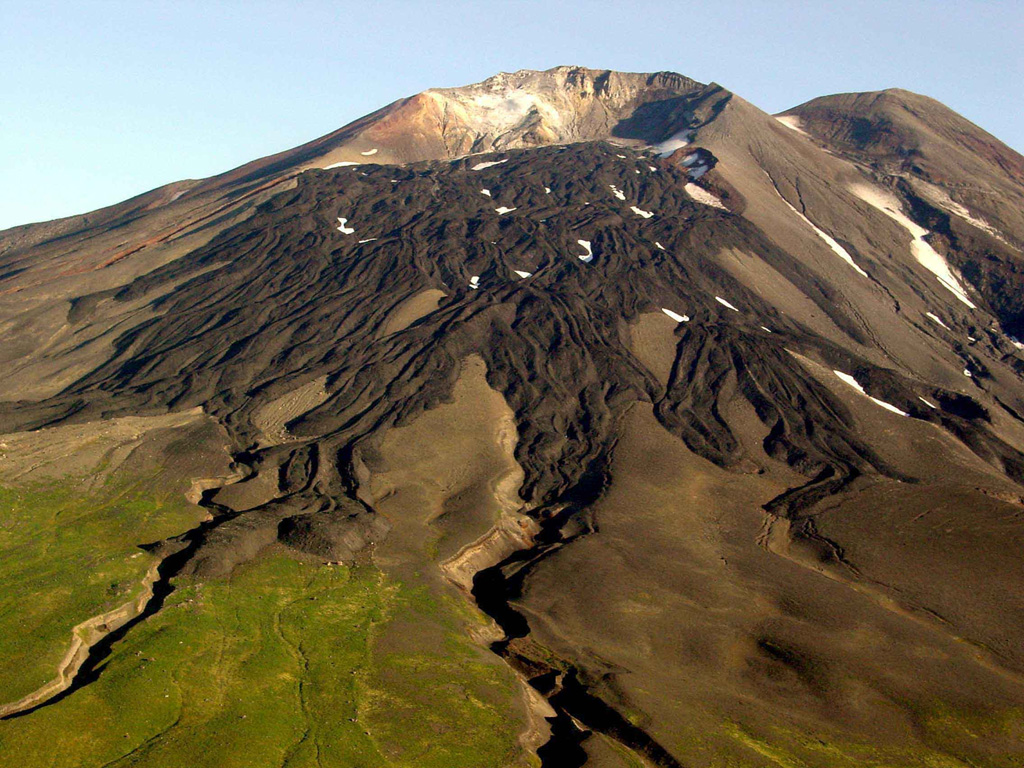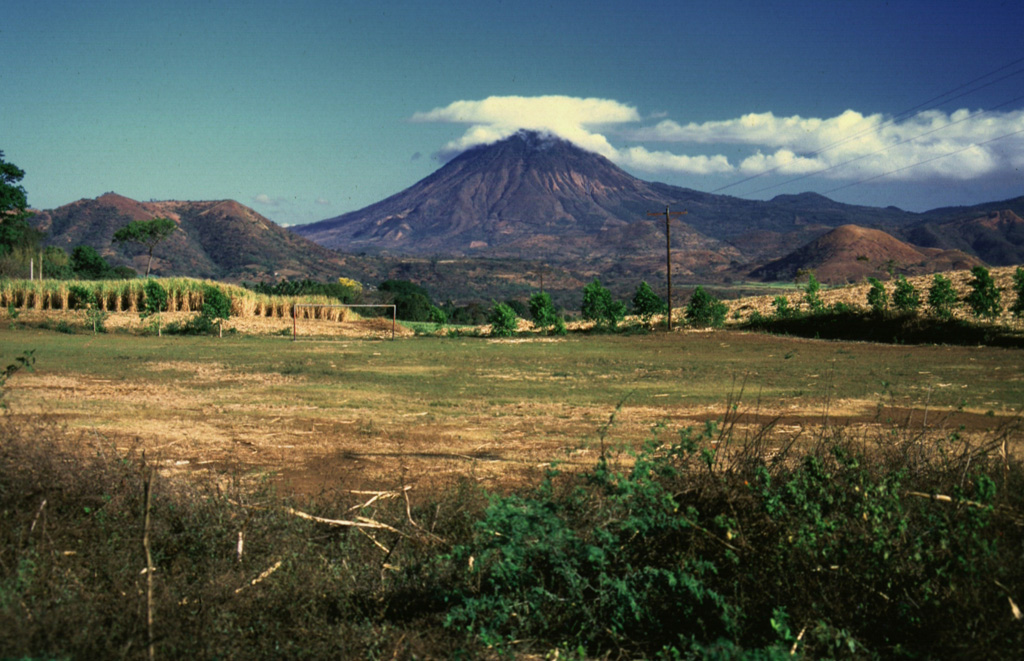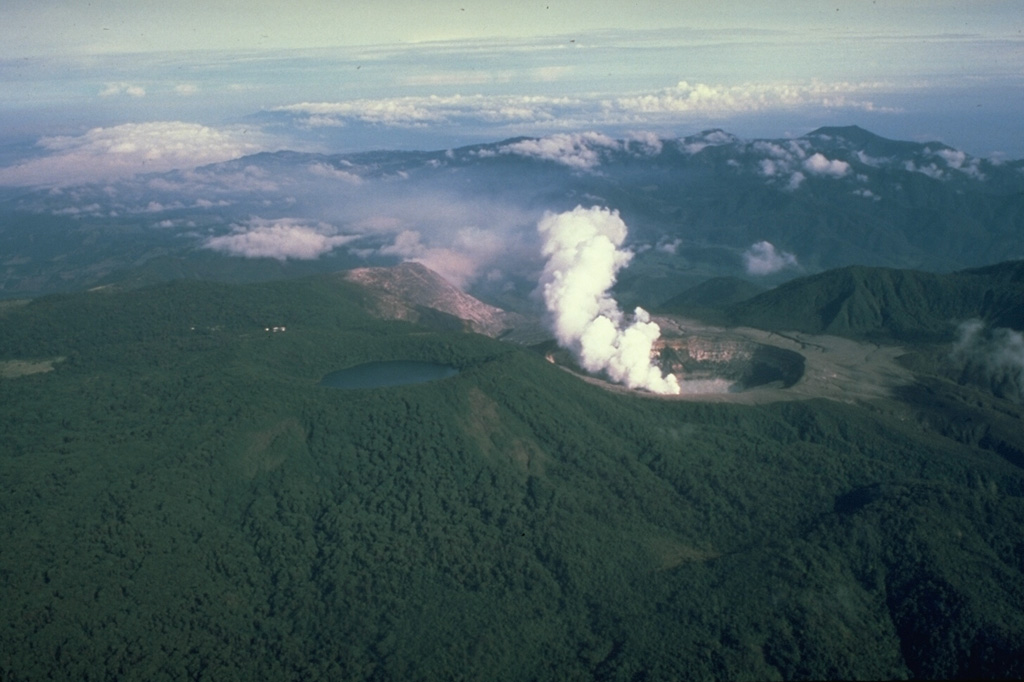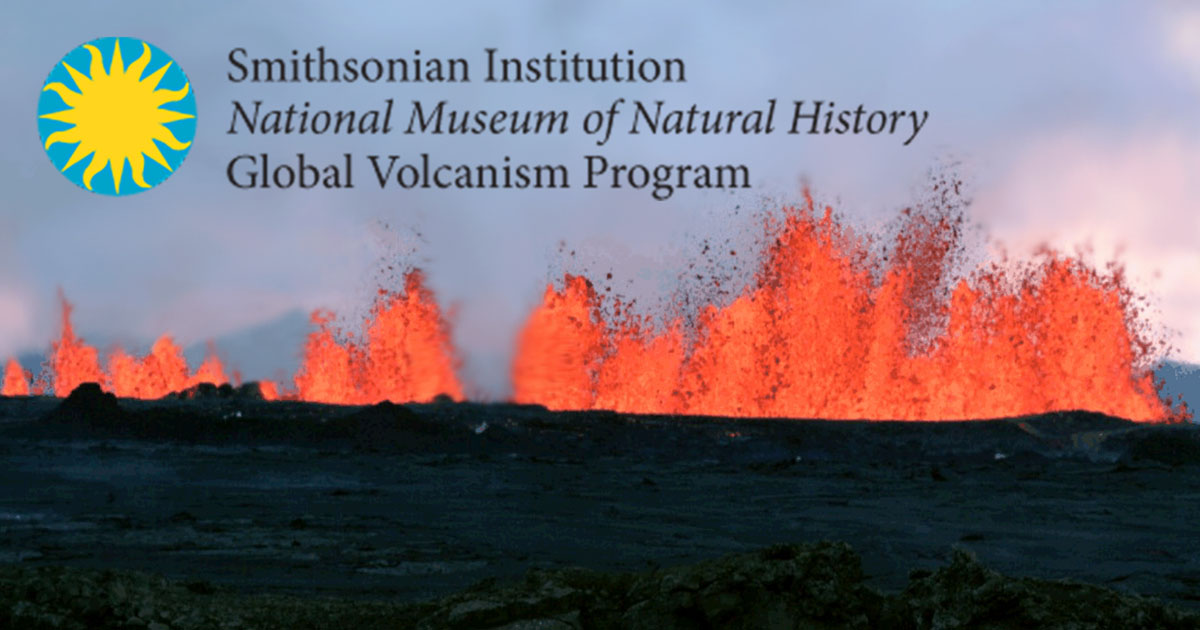Global Volcanism Program
Por um escritor misterioso
Descrição
Volcán Copahue is an elongated composite cone constructed along the Chile-Argentina border within the 6.5 x 8.5 km wide Trapa-Trapa caldera that formed between 0.6 and 0.4 million years ago near the NW margin of the 20 x 15 km Pliocene Caviahue (Del Agrio) caldera. The eastern summit crater, part of a 2-km-long, ENE-WSW line of nine craters, contains a briny, acidic 300-m-wide crater lake (also referred to as El Agrio or Del Agrio) and displays intense fumarolic activity. Acidic hot springs occur below the eastern outlet of the crater lake, contributing to the acidity of the Río Agrio, and another geothermal zone is located within Caviahue caldera about 7 km NE of the summit. Infrequent mild-to-moderate explosive eruptions have been recorded since the 18th century. Twentieth-century eruptions from the crater lake have ejected pyroclastic rocks and chilled liquid sulfur fragments.

Global Volcanism Program - GVP information balloon for Colima as seen in the Google Earth volcano layer.

Global Volcanism Program, Momotombo

GLOBAL VOLCANISM PROGRAM -VOLCÁN TAJUMULCO

Global Volcanism Program

Plume from Lascar volcano, April 1993 eruption. NOAA image. (Source

Global Volcanism Program

Global Volcanism Program, Image GVP-03509

Global Volcanism Program, Wudalianchi in 2023

Report from the Bulletin of the - Global Volcanism Program

Global Volcanism Program

Smithsonian Institution - Global Volcanism Program: Worldwide Holocene Volcano and Eruption Information
de
por adulto (o preço varia de acordo com o tamanho do grupo)







